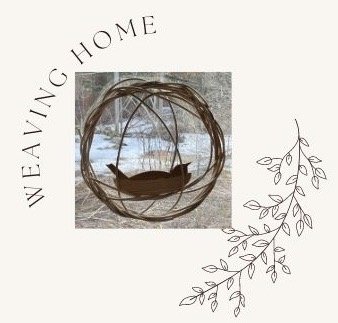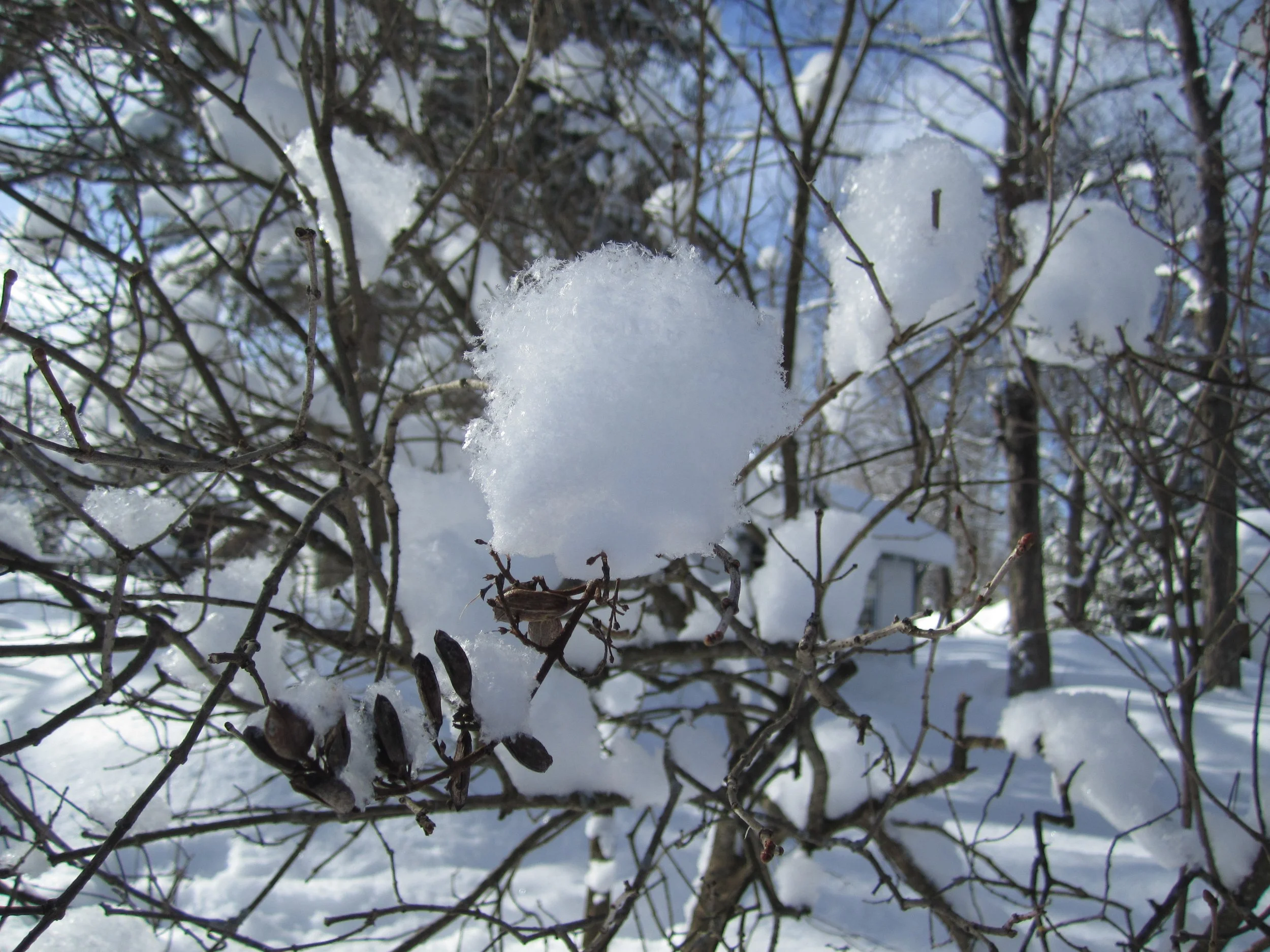In January there are often no animals sounds, there is hardly any traffic noise expect on weekends when the snowmobiles are on the trails, but if you walk in the January woods, you can hear the soft sound of your foot crunching on the ice hard snow, you see your breath crystalize in the air, and if you are very lucky you can see a sun pillar. One morning while driving in subzero temperatures, there was a beautiful rainbow sun pillar illuminating the January sky, in awe and wonder I stopped and in the silence and stillness beauty surrounded me.
Silence is the key to listening to the created world, silencing our mind, stilling our bodies and resting in the absolute essence of being. Father Thomas Keating is noted as saying, ‘God’s first language is silence.’ There are Biblical examples of silence. Elijah on the mountain waiting for God to pass by, God was not in the fire or the earthquake, but in the still small voice. (I Kings 19:11-13). Jesus often goes off alone to pray, without distraction. (Matthew 14:23). John Philip Newell reminds us that to listen to the heartbeat of God requires stillness. In his liturgies he includes time to be still and aware and a time to be silent. Howard Thurman describes the complex varieties of silence, from sitting in a fishing boat, to being in a Quaker meeting, to contemplating Jesus as aide to prayer. Centering, practicing stillness, opens our hearts and minds, and raises our consciousness.
“We give this cognitive stillness the name of consciousness. It is a form of inner energy without boundaries. It has the qualities of stillness, peace, and equanimity in our body, mind, and heart. But its preeminent quality is cognition, the general capacity to perceive. By turning our consciousness back on itself, we can perceive it. To do that, we simply relax back into this inner stillness and rest there, fully alert to this unfamiliar space.” (Joseph Naft, “Inner Frontier: Cultivating Inner Presence,”)
Naft describes consciousness as awareness of our inner self. Keeping silence can be seen as inner work, it brings us to the notion of mindfulness. Being present in the now, perceiving what is arising in each moment necessitates a certain amount of stillness and quite. Yet it also opens us to our own communal nature. “The deeper we move within our own souls, the closer we come to the soul of one another. And the closer we move to the heart of all life, the nearer we come to the heart of our being.” (John Philip Newell, Christ of the Celts)
Chanting, which is not silent, is a communal art form that stills and quiets our minds and helps us to connect to the inner self, the true self, the self that is in communion with God. Cynthia Bourgeault talks about early monks chanting the psalms as an “entrance into contemplative prayer and work of inner transformation by focusing the mind with the words of the psalm.” This focused mindful activity creates life giving community. The harmony in a chant penetrates deeply into the body, its resonance is healing. Bourgeault tells the story of a group of monks who were told chanting was no longer necessary, so it was cut from their daily devotions. A strange illness began debilitating the monks, and the doctor could not find what was wrong. When chanting was reinstated, the monks regained their health. The sound vibrating off the walls on the monastery, the harmony, the unity in chanting as a group all worked together to bring healing and wholeness. Our bodies are more than mere machines. Our physical being is spirit as well, “there is nothing but Spirit in any direction.” (Ken Wilbur, the Religion of Tomorrow)
As chant and singing is a vehicle for stillness and inner silence, so is body movement such as yoga, Qi Gong and other meditation forms of movement and breathing. During the short days of January, cross country skiing can be an act of meditative silence. Arms and legs gliding along in rhythm. Breath matching the strides, white clouds of exhalation visible in the air. In movement there can be stillness within. In nature, even in frigid temperatures, the still world invites pause, and deep seeing. Standing in awe of the ice crystals lining the evergreen branches, listening to the faint trickle of water under a frozen stream all are means to inner awareness. “Be still and know that I am God.” (Psalm 46:10)
January living is hard too, yes, there is beauty, but it is cold, the sun does nothing to warm the earth although the days are getting longer. It is work to keep your house warm, to shovel snow, to go out in a blizzard to keep an appointment. Life does not stop when there are storms. There are few birds who stay the winter, and if they do it is a dangerous life for them, they must each often or they die. “Only those who know nothing of nature can be entirely romantic about living close to the soil.” Esther De Waal, The Celtic Way of Prayer) The elements are a force to be reconned with, there is nothing easy about winter in the Adirondacks, that is why so many people leave for southern states from October to May.
Staying year-round, we learn that the seasons hold rhythms that can teach deep truths. When the animals are hibernating, and the earth is cold and frozen, we might learn that striving against the elements does not make as much sense as joining the flow of quiet and rest. Rest offers an “awareness and practice of the claim that we are situated on the receiving end of the gifts of God.” (Walter Brueggemann, The Sabbath Way of Resistance) Resting allows the opportunity for mindfulness, for letting go of all the stress, striving and grabbling that consumes us.
January offers a time of rest, stillness and silence. It has become a time for renewal, to make resolutions, to do new things, perhaps the stillness, rest and silence will eventually lead us into these new ways of being, when we are open to the leading of the Spirit anything is possible.

